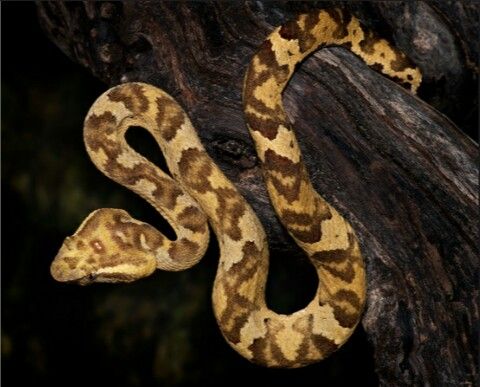Search This Blog
Pit Vipers The Optimal Blend of Style & Performance. Pit Vipers Outdoor Fashion and Lifestyle.
Featured
- Get link
- X
- Other Apps
What is Flat-Nosed Pit Viper (Trimeresurus Puniceus)?
Flat-Nosed Pit Viper (Trimeresurus puniceus) is a venomous pit viper species endemic to Southeast Asia. This species is nocturnal and arboreal. There are no recognized subspecies of this species at present.

- Kingdom: Animalia
- Phylum: Chordata
- Subphylum: Vertebrata
- Class: Reptilia
- Order: Squamata
- Suborder: Serpentes
- Family: Viperidae
- Subfamily: Crotalinae
- Genus: Trimeresurus
- Scientific Name: Trimeresurus puniceus
Physical Description
The general size of the flat-nosed pit viper is similar in basis to that of many arboreal Trimeresurus species. The head and neck are well defined. It has long neck and long body. But it is heavier or wider than most arboreal species. The head is relatively large, especially in females, with a long, triangular head. The front of the head is kind of straight and sharp. On the nose, a clear line is visible from the upper lip to the lower lip.
Males are easily distinguishable from females by being slimmer, with smaller heads, fewer triangles, more contrast and color in the pattern (especially as young), and remaining small. Adult males are usually 60-70cm long and females 100-130cm long, making them one of the larger Trimeresurus species. The male tail is noticeably longer and has a wider base behind the cloaca.
Habitat
There's not a lot of information about its range. But they seem to prefer to live in humid subtropical or tropical forests, where there is a lot of vegetation. Altitudes may vary between almost sea level and 1450M. This makes it difficult to choose the right temperature gradient.
Behavior
Most of the flat-nosed pit viper have bad tempers. None of the genus can be called "sedative" and most are defensive. But when flat-nosed pit viper feels threatened, they do not hesitate to strike. Bites are usually long and firm with long teeth. Fortunately, since this pit viper prefers dense (tropical) forests, is nocturnal and does not often come into contact with humans, many of the species' bite incidents in their natural range are not responsible.
It is an almost nocturnal species, hiding among leaves and bark on the forest floor. They are not active hunters, but sit back and wait for predators with great accuracy. When the sun goes down, they usually climb on logs, lie between tree roots or hang on low branches, head down, waiting for prey to pass. This species is primarily terrestrial, but can climb well. In glass containers, they will hang from branches, especially after good atomization.
Diet
The flat-nosed pit viper's diet varies by age and season. But it will mostly be made up of small rodents and other mammals, birds and frogs.
- Get link
- X
- Other Apps
Popular Posts
What is Eastern Diamondback Rattlesnake?
- Get link
- X
- Other Apps
Himalayan Pit Viper-Gloydius Himalayanus
- Get link
- X
- Other Apps
Comments
Post a Comment